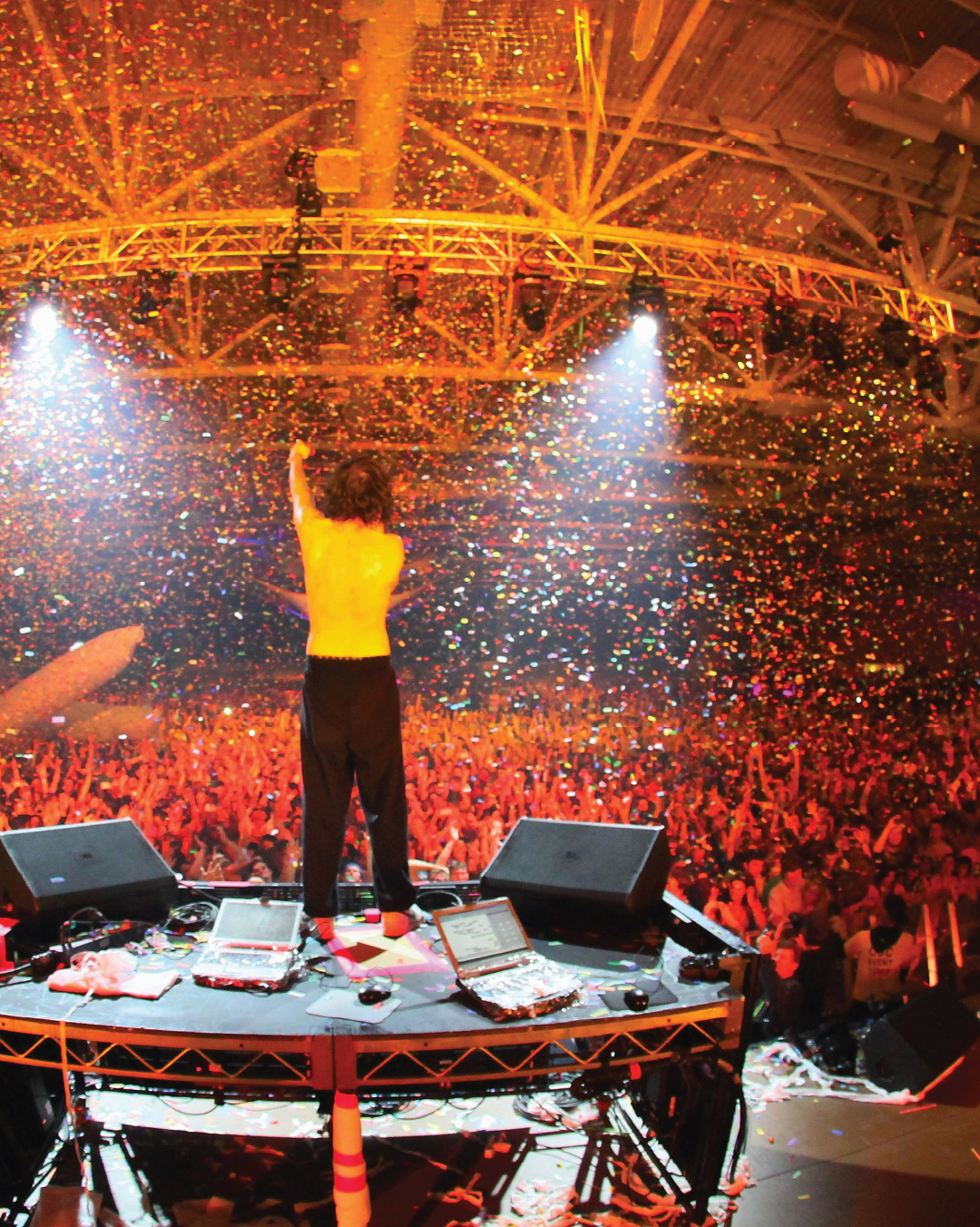5
Sound Recording and Popular Music
Printed Page 126

Of all mass media, sound recording has arguably been most immediately transformed by recent technological advances. This transformation both enables and invigorates the lasting popularity of Gregg Gillis—more commonly known as Girl Talk. Gillis in performance resembles a mad scientist on a manic mission to make people dance. He’s not a vocalist or rapper, however, nor is he a virtuoso guitarist—and he is adamant about not being labeled a deejay. He is, instead, a master of laptop remixing: of digitally sampling and reassembling bits and pieces of popular songs into something strange and new called a mashup. Even at his live shows, the music comes together by triggering samples from a computer. This repurposed music can be incredibly dense and inspires much attention from his fans: in November 2010, Girl Talk released All Day, his fifth album, as a free download, and within twenty-four hours, fans had identified and catalogued 373 samples in the new album.1
Whether honored as an artist or condemned as a thief, Girl Talk amplifies a list of provocative questions that confront music lovers during the age of digital reproduction: How will we “consume”—or “appropriate,” poach, pirate, remix, and mashup—popular recorded music in the future? What role will the Internet, cell phones, iPods, and laptops play in our relationship to recorded music? Who will control the sound recording industry in the years to come, as new competitors like Gregg Gillis step up to challenge the industry leaders? What messages will songwriters, singers, and musicians convey to us through their work? And how will artists profit from their efforts?
THE INVENTION OF SOUND RECORDING TECHNOLOGY transformed our relationship with popular music and made sound recording a mass medium. Before recording, people had one way to listen to music: attend a live performance. With the advent of sound recording, people could also buy recordings and listen to their favorite music wherever and as often as they wanted. As technological advances made it cheaper and easier for everyone to gain access to sound recordings, music began reshaping society and culture. But the recording industry itself has also changed with the times. Consider what happened in the 1950s after TV began capturing a bigger share of Americans’ attention and time: Record labels and radio stations—previously adversaries—joined forces to create Top 40 or “hit song” programming to attract more listeners and stimulate music sales. Many years later, the industry was forced to shift again in the face of technology, as the MP3 format made recorded music more accessible (and easier to duplicate) than ever.
In this chapter, we assess the full impact of sound recording and popular music on our lives by:
- examining the early history and evolution of sound recording, including the shift from analog to digital technology and the shifting relationship between record labels and radio stations
- shining a spotlight on the rise of popular music (including jazz, rock, and country) in the United States
- tracing changes in the American popular-music scene, such as rock’s move into the mainstream and the proliferation of rock alternatives (including folk and grunge)
- analyzing the economics of the sound recording industry, including how music labels, artists, and other participants make and spend money
- considering sound recording’s impact on our democratic society today by exploring questions such as whether the recording industry is broadening participation in democracy or constraining it